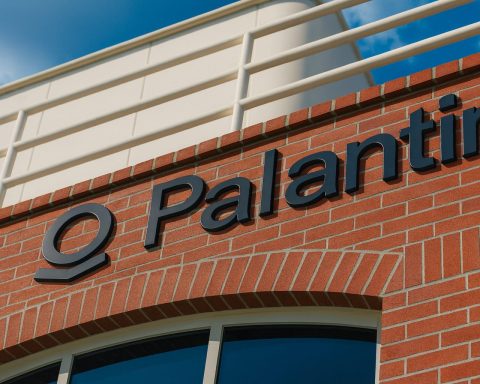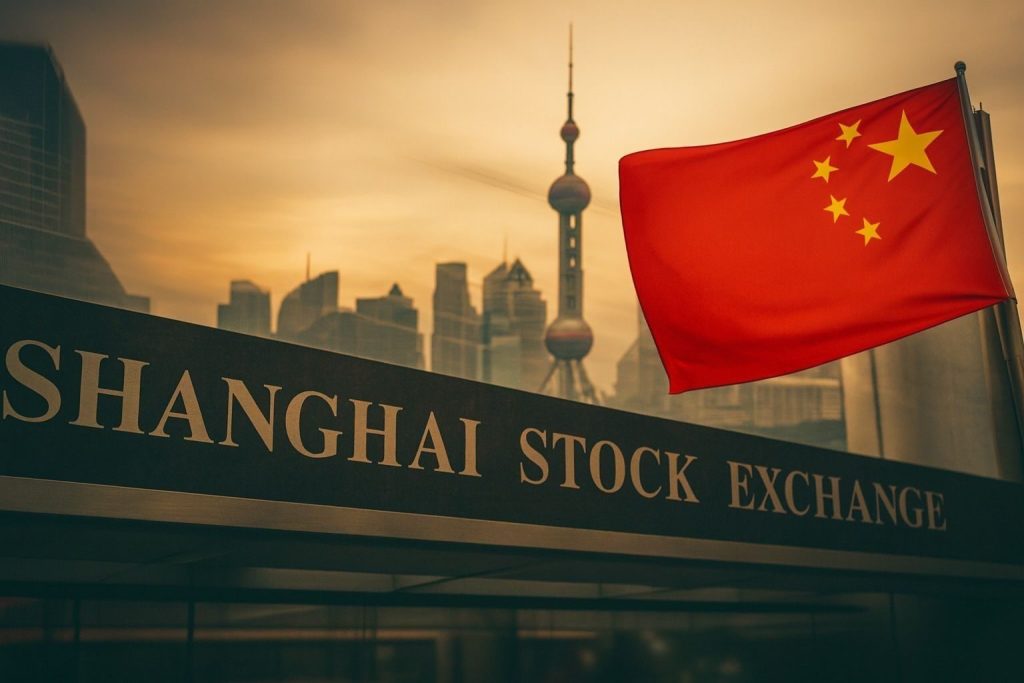Sydney – Monday, 24 November 2025 — The Australian stock market kicked off the week with a strong relief rally, snapping a painful run of November losses as investors piled back into technology, healthcare and industrial names on renewed hopes of interest rate cuts in the United States.
The benchmark S&P/ASX 200 jumped about 1.3% to around 8,525 points, clawing back a slice of last week’s heavy falls and leaving the index modestly positive for 2025 year-to-date. The broader All Ordinaries added a similar 1.3%, while small caps and growth stocks outperformed, signalling a clear return of risk appetite after several bruising sessions. [1]
Market snapshot: ASX 200, All Ords and the Australian dollar
Key closing levels for Monday 24 November 2025:
- S&P/ASX 200: ~8,525 points, +1.29%
- All Ordinaries: ~8,800 points, +1.31%
- Small Ordinaries: ~3,583 points, +1.80%
- All Tech Index: ~3,578, +2.3%
- Australian dollar: around US$0.646, slightly firmer on the day [2]
Market breadth was emphatically positive: roughly 170 of the top 200 stocks finished higher, with only a handful of large caps — notably Woodside Energy and Macquarie Group — ending in the red. [3]
Under the hood, the rally was broad but clearly led by interest‑sensitive and growth sectors:
- Industrials: +2.7%
- Information Technology: +2.4%
- Real Estate: +2.1%
- Utilities: +2.0%
- Health Care: +2.0%
By contrast, Energy was the day’s only losing sector, slipping around 0.3%, while materials and financials posted more modest but solid gains of about 1%. [4]
Rebound after a brutal November
Monday’s surge came after a difficult stretch for Australian equities:
- Over the previous week, the ASX 200 had slid about 2.5% to 8,416 points, marking a fourth consecutive weekly loss. [5]
- By late last week, the index was down roughly 5% for November, putting the month on track to be the worst since September 2022. [6]
Sharp selling was concentrated in banks and technology, with IG and other strategists noting that financials had fallen more than 7% and information technology more than 16% over November before Monday’s bounce. [7]
Even after that slump, however, official index data show the S&P/ASX 200 still up around 4.5% year‑to‑date on a price-return basis as of 24 November, helped by earlier gains in 2025. [8]
Monday’s session also extended a run of wild intraday moves. Local market commentary described it as the third straight session with a triple‑digit (100+ point) swing for the ASX 200 — a “washing machine” pattern of up, down, up that underlines just how jumpy sentiment has become. [9]
Wall Street’s tech surge and Fed cut hopes set the tone
Global leads were significantly more positive heading into the local open.
On Friday in New York, U.S. equities staged a strong rally:
- The S&P 500 gained roughly 1.3–1.5%.
- The Nasdaq jumped more than 2%, powered by big tech and AI‑linked names such as Alphabet and Tesla. [10]
The key driver was a shift in expectations for U.S. monetary policy. Dovish remarks from senior Federal Reserve officials — including John Williams and Christopher Waller — fuelled speculation that the Fed could cut rates again in December, with futures markets rapidly repricing the odds of another 25 basis point move. [11]
Local strategists noted that markets are now pricing around a 70% probability of a December Fed cut, up from roughly 40% only a week earlier. [12]
That shift matters for the ASX because:
- Lower global rates support equity valuations, particularly for high price‑to‑earnings tech, healthcare and infrastructure stocks.
- A softer U.S. dollar and lower bond yields tend to ease financial conditions worldwide, providing cover for investors to rotate back into risk assets.
Asia‑Pacific markets responded in kind on Monday, with Australian shares riding the wave alongside gains in South Korea’s Kospi and Hong Kong’s Hang Seng. [13]
Interest‑sensitive sectors roar back
The biggest winners on the day were sectors that had been hit hardest by the recent back‑up in global bond yields.
Technology and healthcare
The All Tech Index climbed more than 2.3%, outpacing the broader market as investors hunted for bargains in previously sold‑off software, payments and platform names. [14]
Notable moves included:
- Life360 jumping around 7%, as traders returned to high‑growth software exposed to U.S. consumers. [15]
- WiseTech Global and other quality tech names rising in the low‑single‑digit range after sharp November declines, helped by lower rate expectations. [16]
In healthcare, the index advanced about 2%, with heavyweights such as CSL and imaging specialist Pro Medicus both firming as investors rotated towards defensive growth. Pro Medicus also benefited from ongoing enthusiasm around recently announced U.S. contract wins. [17]
Real estate, utilities and bond proxies
Real‑estate investment trusts and infrastructure‑style stocks — often treated as bond proxies due to their yield focus — also enjoyed a strong bid:
- Real Estate: +2.1%
- Utilities: +2.0%
Names such as Dexus, GPT Group, Mirvac and APA Group posted gains of around 2.5–4%, recouping part of their November drawdowns as long‑term yields eased. [18]
Industrials take the top spot
Industrials were the best‑performing sector, up about 2.7%, turbocharged by a huge move in Qube Holdings and a double‑digit jump in plumbing and HVAC supplier Reece. [19]
Miners and banks join the recovery – but energy and lithium lag
Resources
The Materials sector rose about 1.1%, supported by firmer iron ore prices and improved risk sentiment across global commodities. Major miners BHP, Rio Tinto and Fortescue Metals Group all traded higher, though BHP slightly underperformed after the latest twist in its Anglo American saga. [20]
Lithium and some battery‑materials names lagged the broader resources rally. Stocks such as Pilbara Minerals, IGOand Mineral Resources fell between roughly 3–4%, tracking weaker Chinese lithium futures and ongoing concerns about oversupply in the EV supply chain. [21]
Financials
The big four banks — CBA, Westpac, NAB and ANZ — rose around 1%, helping the Financials index add just over 1% on the day and recoup part of its heavy month‑to‑date losses. [22]
Still, local commentary stressed that sentiment towards banks remains fragile, with recent declines reflecting margin pressure, potential credit quality concerns and the risk of higher capital requirements. Analysts have also highlighted that banks have been at the centre of November’s broader “quality unwind”. [23]
Energy, meanwhile, bucked the positive trend. The Energy sector slipped around 0.3%, with Woodside Energy among the few large caps to close lower despite only modest moves in crude oil benchmarks. [24]
Big deals light up the board: Qube and Monash IVF
Qube soars on Macquarie’s $11.6 billion bid
The day’s standout corporate story was Qube Holdings, whose shares surged about 19–20% to record highs.
- Macquarie Asset Management launched an all‑cash takeover offer at A$5.20 per share, implying an enterprise value of A$11.6 billion and a near 28% premium to Qube’s previous close. [25]
- Qube’s board has indicated it is supportive of the proposal in the absence of a superior offer, with Macquarie granted a period of exclusive due diligence. [26]
The deal, if completed, would rank as one of Australia’s largest transactions of 2025 and underscores intense investor appetite for logistics, ports and infrastructure assets, particularly those tied to trade flows and supply‑chain resilience. [27]
Qube’s surge made it the single biggest contributor to Monday’s index gain among the top 200 stocks.
Monash IVF rockets after rejecting takeover bid
Another dramatic mover was Monash IVF Group, which soared roughly 40% after rejecting a takeover bid from a private‑equity‑led consortium. [28]
Key details:
- A consortium led by Genesis Capital and investment firm Washington H. Soul Pattinson offered A$0.80 per share for the stock it does not already own, valuing Monash IVF at about A$311.7 million and representing a 31% premium to the previous close. [29]
- The Monash IVF board rejected the bid, arguing it materially undervalued the company and questioning aspects of the proposed financing structure. [30]
Investors appeared to agree that the approach was opportunistic, aggressively repricing the stock and pushing it to its highest level since mid‑May. Analysts suggested the move could flush out rival bidders and re‑ignite broader M&A interest in the healthcare and fertility space. [31]
Stock‑specific stories: Baby Bunting and other notable movers
Baby Bunting dips on CEO health update
Shares in specialty baby‑goods retailer Baby Bunting slipped about 2.5% to A$2.73 after the company disclosed that CEO Mark Teperson has been diagnosed with myelofibrosis, a rare bone‑marrow cancer. [32]
The company emphasised that:
- Mr Teperson’s prognosis is classified as low‑risk (DIPSS‑0).
- His condition and non‑invasive treatment plan are not expected to affect his ability to continue in the role in the near term. [33]
While the medical update is serious, the measured share price reaction suggests investors are more focused on the retailer’s operating turnaround and competitive pressures than on immediate governance disruption.
Leaders and laggards
Among the top blue‑chip gainers on the day were: [34]
- Qube Holdings: +19.4%
- Reece: +12.7%
- Life360: +7.1%
- Sims and Superloop: both around +7–8%
On the downside:
- Liontown Resources and Boss Energy each fell more than 4–6%, as investors rotated away from some high‑beta resource names.
- Pilbara Minerals, IGO and Mineral Resources all declined between 3–4%, reflecting broader lithium sector weakness. [35]
Some local commentators also pointed to short‑covering as a feature of the session, with heavily shorted consumer and tech names seeing bursts of buying as the market rebounded. [36]
Outlook: Can one big bounce reverse the trend?
Even after Monday’s impressive rally, the ASX 200 is still working its way through:
- A multi‑week drawdown from its recent record highs.
- A choppy global backdrop, with investors torn between rate‑cut optimism and concerns about growth, earnings downgrades and over‑extended AI valuations. [37]
Strategists at UBS, for example, have argued that the recent 8% pull‑back from the index’s peak around 9,115 points to the low 8,300s has improved valuations, and they now forecast the ASX 200 to recover towards 8,900 by the end of 2026 on the back of double‑digit earnings growth, led by miners and supported by consumer and healthcare names. [38]
In the nearer term, traders are squarely focused on Wednesday’s monthly CPI data for October, which could heavily influence expectations for the Reserve Bank of Australia’s next move and either reinforce or undermine Monday’s renewed risk appetite. [39]
What Monday’s move means for investors
For investors watching the Australian stock market today (24 November 2025), the key takeaways are:
- The trend isn’t fully repaired, but the tone has improved.
- A 1.3% bounce after several weeks of selling suggests bargain hunters and short‑covering are active, yet the index remains below recent highs and November is still negative overall.
- Rate‑cut expectations are driving sector leadership.
- As long as markets believe the Fed — and eventually the RBA — will tilt more dovish, tech, healthcare, real estate and infrastructure are likely to remain key swing sectors.
- M&A is back as a catalyst.
- Big moves in Qube and Monash IVF show that corporate activity can unlock value even in a jittery market, particularly in assets with strong strategic positioning (logistics, healthcare, infrastructure).
- Stock‑picking matters more than ever.
- The stark contrast between winners (Qube, Reece, Life360) and losers (Liontown, Pilbara, IGO) highlights that thematic exposure alone isn’t enough; balance sheets, pricing power and industry dynamics are driving dispersion.
- Volatility is likely to remain elevated.
- With major economic data and central bank decisions still ahead before year‑end, investors should expect more triple‑digit swings in the ASX 200 and consider appropriate risk management, rather than assuming Monday’s rally marks a straight‑line recovery.
References
1. www.marketindex.com.au, 2. www.marketindex.com.au, 3. www.abc.net.au, 4. www.marketindex.com.au, 5. fnarena.com, 6. fnarena.com, 7. www.ig.com, 8. www.spglobal.com, 9. www.marketindex.com.au, 10. apnews.com, 11. www.reuters.com, 12. fnarena.com, 13. www.mpcmarkets.com.au, 14. www.marketindex.com.au, 15. www.marketindex.com.au, 16. www.news.com.au, 17. www.marketindex.com.au, 18. www.marketindex.com.au, 19. www.marketindex.com.au, 20. www.abc.net.au, 21. www.marketindex.com.au, 22. www.marketindex.com.au, 23. www.ig.com, 24. www.marketindex.com.au, 25. www.reuters.com, 26. www.reuters.com, 27. www.reuters.com, 28. www.reuters.com, 29. www.reuters.com, 30. www.reuters.com, 31. www.reuters.com, 32. www.marketindex.com.au, 33. www.sharecafe.com.au, 34. www.marketindex.com.au, 35. www.abc.net.au, 36. www.fool.com.au, 37. fnarena.com, 38. www.theaustralian.com.au, 39. fnarena.com







